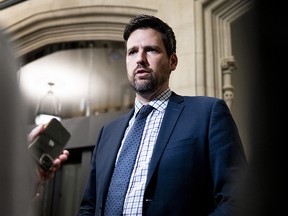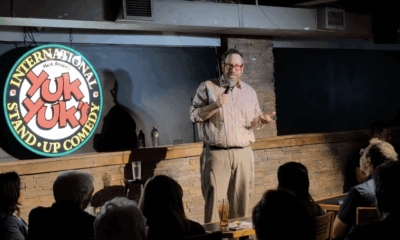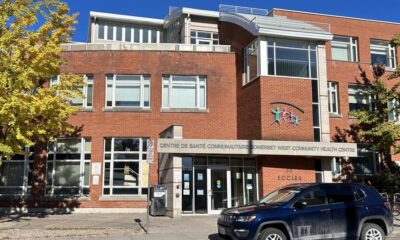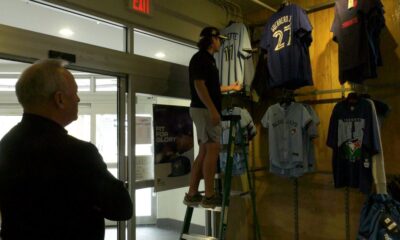Lifestyle
Isuarsivik Celebrates 30 Years of Recovery and Healing in Nunavik
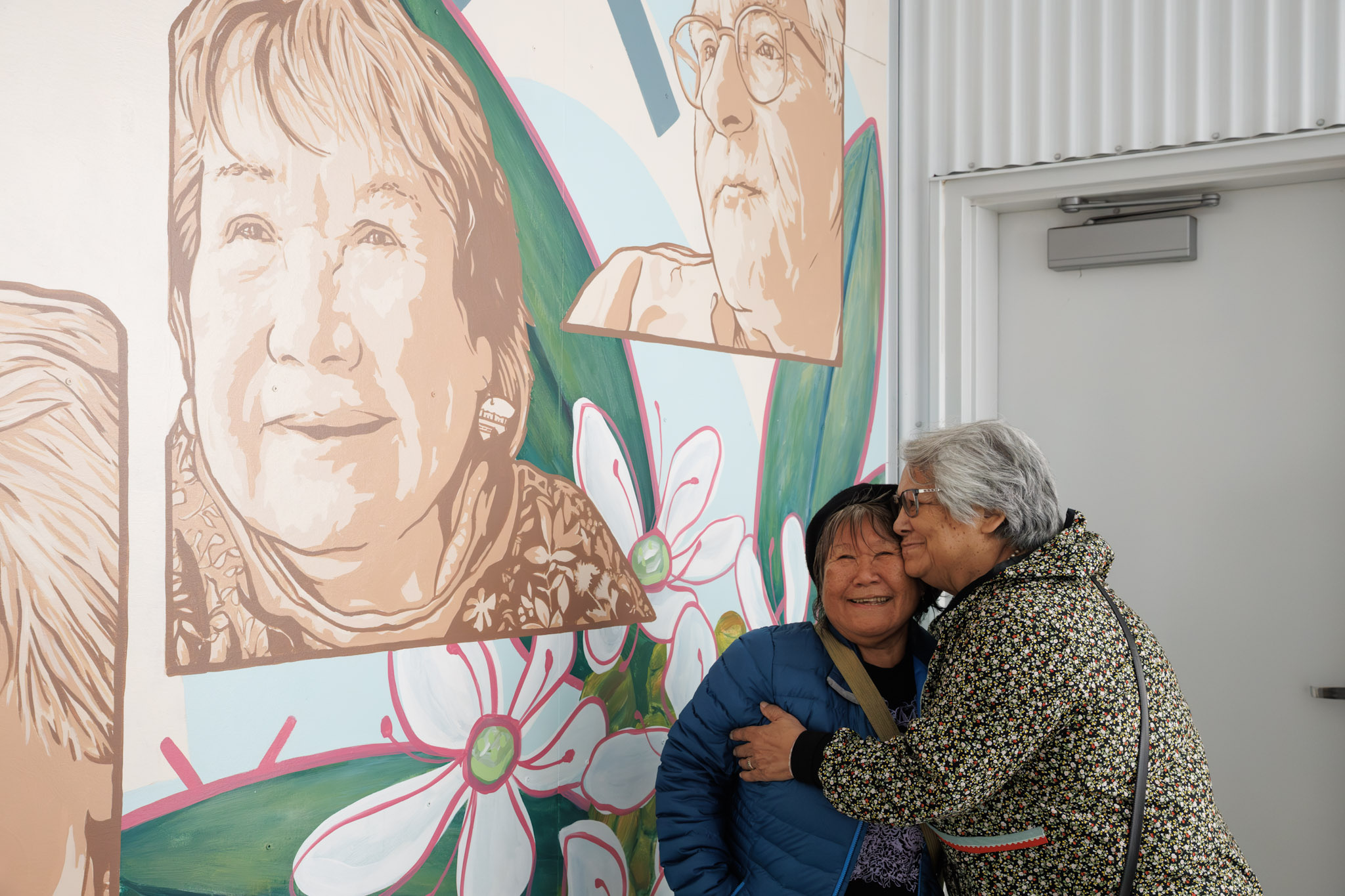
The Isuarsivik Regional Recovery Centre in Kuujjuaq, Nunavik, marked its 30th anniversary with a celebration that included the unveiling of a mural dedicated to six pioneers in the field of recovery. The mural, created by artists Niap Saunders and Kevin Lego, honors the contributions of individuals such as Roda Grey, who have played significant roles in supporting their communities through challenging times.
Located at the centre, the mural faces the parking lot and serves as a reminder of the ongoing journey towards healing in the region. Grey, who returned to Kuujjuaq in 2007 to train as a substance use counsellor, previously worked at a national level with organizations like Inuit Tapiriit Kanatami in Ottawa. Reflecting on her experiences, she stated, “I wanted to be a counsellor because I wanted to find out what happened to us in Nunavik.”
The challenges faced by the Inuit community in Nunavik are substantial, with issues stemming from the loss of traditions, insufficient resources, and intergenerational trauma linked to colonization. Grey explained that the historical slaughter of over 1,000 Inuit sled dogs in the 1950s and 1960s, primarily by the Royal Canadian Mounted Police (RCMP) and Quebec police, profoundly affected community dynamics. “It was a huge change in people, especially in men, because they had no more way of transport to go hunting,” she recalled.
As part of its anniversary celebrations, Isuarsivik displayed a 2.5-metre-long timeline in the healing centre’s dining room, detailing its evolution since its inception. This timeline is also available on the Isuarsivik website. Etua Snowball, the director general of Isuarsivik, emphasized the importance of reflecting on past progress: “We want to look back and see what we’ve done in the past, what worked, and what could be improved.”
In the early 1990s, addiction-related services were provided to Nunavimmiut at Pavillon Foster in Montreal. Isuarsivik was established in 1995 through a collaboration between Makivvik Corp. and Johnny Adams, who was the mayor of Kuujjuaq at the time. Initially, the centre served only the residents of Kuujuaq, but it has since expanded its services.
After facing organizational and financial challenges that led to two closures, Isuarsivik reopened in 2008 under new leadership. Grey became the first Inuk clinical supervisor in Canada in 2009. She pointed out that clients—now referred to as guests—often struggled with addiction even after treatment. “We didn’t have aftercare because we didn’t have enough staff,” she said, highlighting a gap that has since been addressed.
Now, Isuarsivik offers aftercare support, an essential component of its treatment program. While measuring success rates can be challenging due to the individual nature of recovery, Grey noted that some guests have achieved full recovery. “You put a little seed in people, and eventually they will water that little seed and it will grow,” she said.
The centre has undergone significant changes since Grey’s departure in 2011. In 2023, Isuarsivik moved into a new facility that accommodates 22 beds and introduced an eight-week treatment program that operates in cycles. Despite these advancements, the centre remains deeply rooted in traditional values and healing practices.
Snowball explained, “We have a lot of trauma with our history. The healing part of it is based on our culture, being on the land and having counsellors discuss with individuals or in group meetings.” In January 2023, Isuarsivik expanded its on-the-land healing space with a new cabin at Navvaataaq Lake, allowing for a more immersive healing experience.
The integration of Inuit traditions and values into the healing process is a priority for the centre. Grey emphasized the importance of connecting guests with their heritage: “We had to help them understand that where they came from was the healthiest.”
As Isuarsivik celebrates its milestone anniversary, Snowball expressed pride in the centre’s accomplishments and urged community members to seek help. “What the centre has been to what it is today are two very different things,” he said. The centre is committed to raising awareness and ensuring its services remain accessible to the community. “We need to make sure people know we are here, and we need to work together for the betterment of our future,” Snowball concluded.
-

 World3 months ago
World3 months agoScientists Unearth Ancient Antarctic Ice to Unlock Climate Secrets
-

 Entertainment4 months ago
Entertainment4 months agoTrump and McCormick to Announce $70 Billion Energy Investments
-

 Lifestyle3 months ago
Lifestyle3 months agoTransLink Launches Food Truck Program to Boost Revenue in Vancouver
-

 Science4 months ago
Science4 months agoFour Astronauts Return to Earth After International Space Station Mission
-

 Technology2 months ago
Technology2 months agoApple Notes Enhances Functionality with Markdown Support in macOS 26
-

 Top Stories3 weeks ago
Top Stories3 weeks agoUrgent Update: Fatal Crash on Highway 99 Claims Life of Pitt Meadows Man
-

 Sports4 months ago
Sports4 months agoSearch Underway for Missing Hunter Amid Hokkaido Bear Emergency
-

 Politics3 months ago
Politics3 months agoUkrainian Tennis Star Elina Svitolina Faces Death Threats Online
-

 Technology4 months ago
Technology4 months agoFrosthaven Launches Early Access on July 31, 2025
-

 Politics3 months ago
Politics3 months agoCarney Engages First Nations Leaders at Development Law Summit
-

 Entertainment3 months ago
Entertainment3 months agoCalgary Theatre Troupe Revives Magic at Winnipeg Fringe Festival
-

 Politics3 weeks ago
Politics3 weeks agoShutdown Reflects Democratic Struggles Amid Economic Concerns

